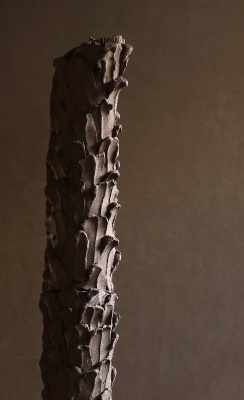Descripción de la Exposición
Globalisation can be understood specifically as an attack on cultures that are close to ‘nature’, or that continue to respect the values implicit in ‘nature’. What are these values? The attitude that humanity shares a delicately balanced habitat with other animals, and that the entire ecology deserves our respect. It is a holistic outlook, advocating sustainable rather than exploitative approaches to resources. This attitude, these ‘natural’ values, were present in early Humanism. What went wrong?
The balance between city-dwellers and rural populations tipped in the direction of urbanism. More of the world’s population is resident in cities than in the countryside, and this process continues to accelerate. It means that fewer and fewer people understand or value the complex and dynamic ecology of ‘nature’ as a set of values or a philosophical model. But urbanisation is only evidence of a more massive change both in the history of ‘humanity’ and in the history of ‘nature’. The narrative that describes the development of the natural world is the science of geology, since what we know about the long history of the planet has been mapped mainly through geology.
There is now a decisive body of evidence to show that the surface of the planet entered a new geological age around 1950, in the decade following the detonation of the first atomic bomb. This evidence comes from many sources: from records of radioactivity, of the use of fossil fuels, of pollutants, of atmospheric and climatic changes, and of the rate of extinctions of species of plants and animals.
The name given to this new age is the Anthropocene, from ‘anthropos’, the Greek word for human.We’ve entered the Age of Humanity, when the behaviour of humanity has become the dominant factor in the ecological balance of the planet.
The 5th Biennial is entitled: WHO ARE WE NOW ? Curator: Lewis Biggs
How do we situate art, and specifically art made in the Mongolian context, in relation to Humanism and the Anthropocene Age? The idea of a trans-cultural, or trans-national, or inter-national art is a Humanist legacy. Without a belief in the commonality of human beings, it would not be possible to make art that communicates beyond one culture by appealing to that which is shared by all humans.If we deny the legacy of Humanism, it means that whatever art we make will only ever be understood or appreciated by people from our own culture.
On the other hand, the Humanist legacy must be held responsible (along with militarism, empire-building, commercial greed and financial power) for producing globalisation and the Anthropocene Age. And these forces threaten each of the specific and unique geographic and linguistic cultures that have evolved over millennia, and that we value and recognise in different parts of the world. We are interested to open a discussion on human values today that will be shared in one of the most remote areas on the globe for a display at the Binennial venues of the capital Ulaanbaatar to enhance a mutual exchange on these issues.

Exposición. 17 abr de 2025 - 03 sep de 2025 / Centro Cultural Andratx (CCA) / Andratx, Baleares, España

Formación. 08 may de 2025 - 17 may de 2025 / Museo Nacional Centro de Arte Reina Sofía (MNCARS) / Madrid, España